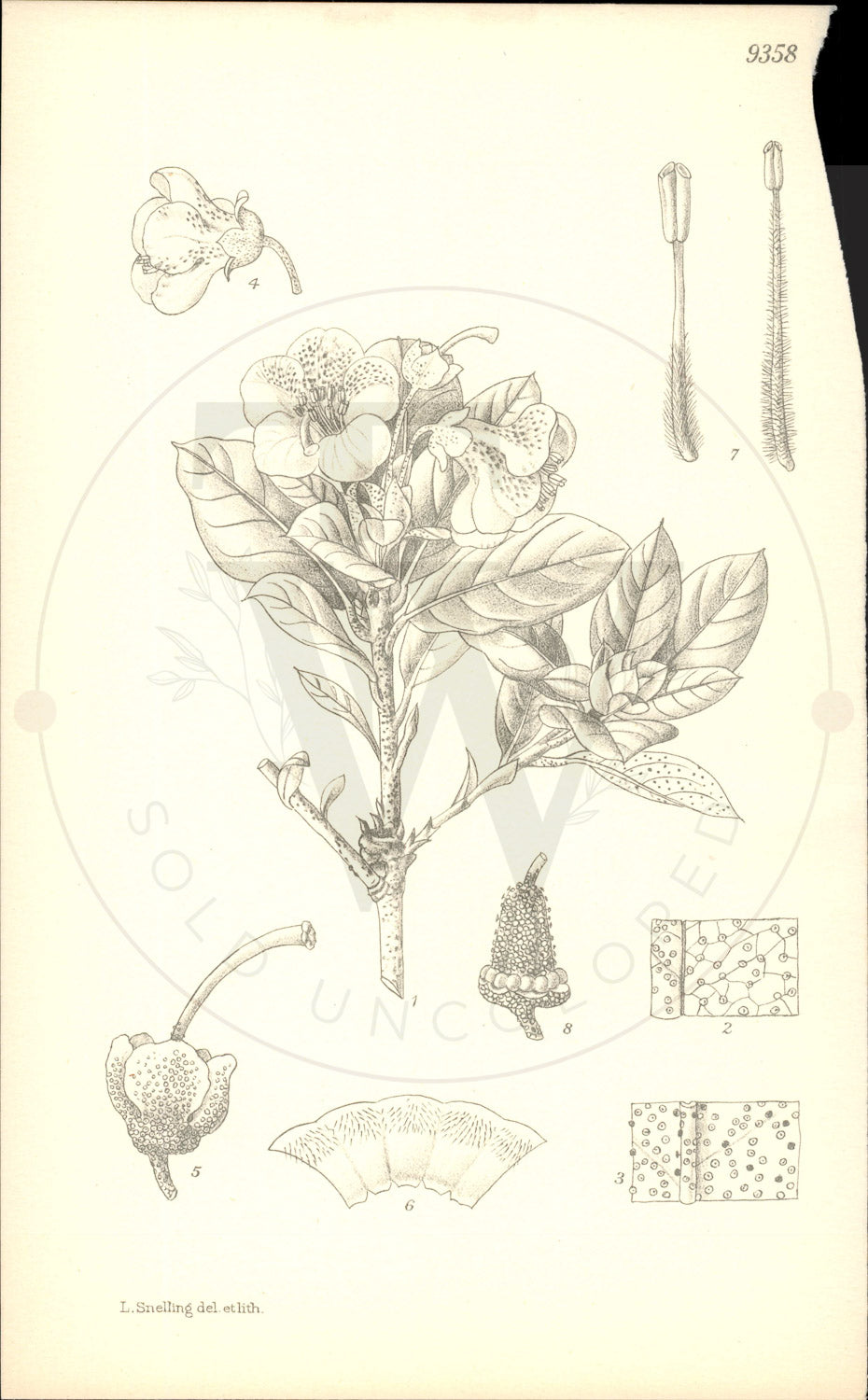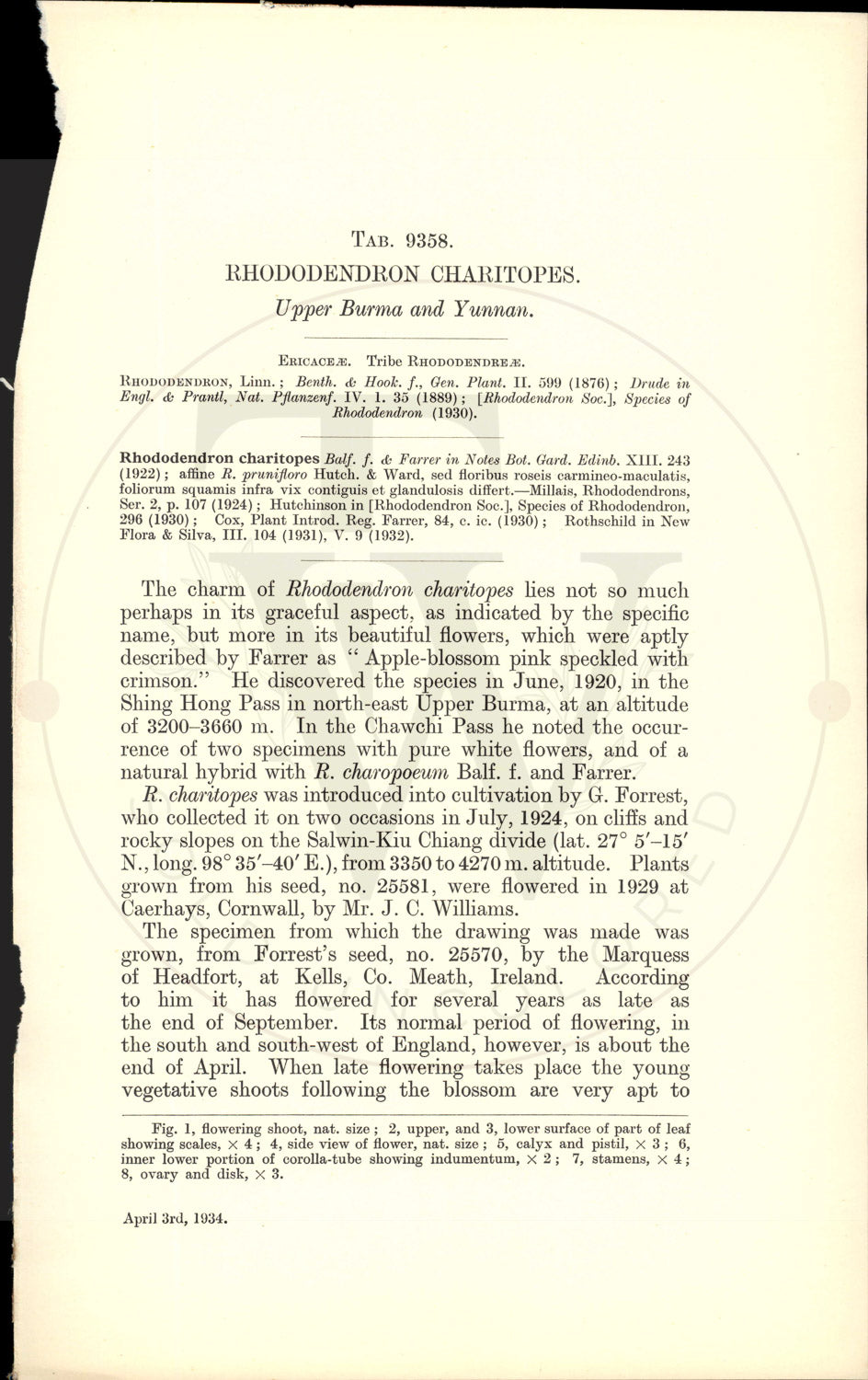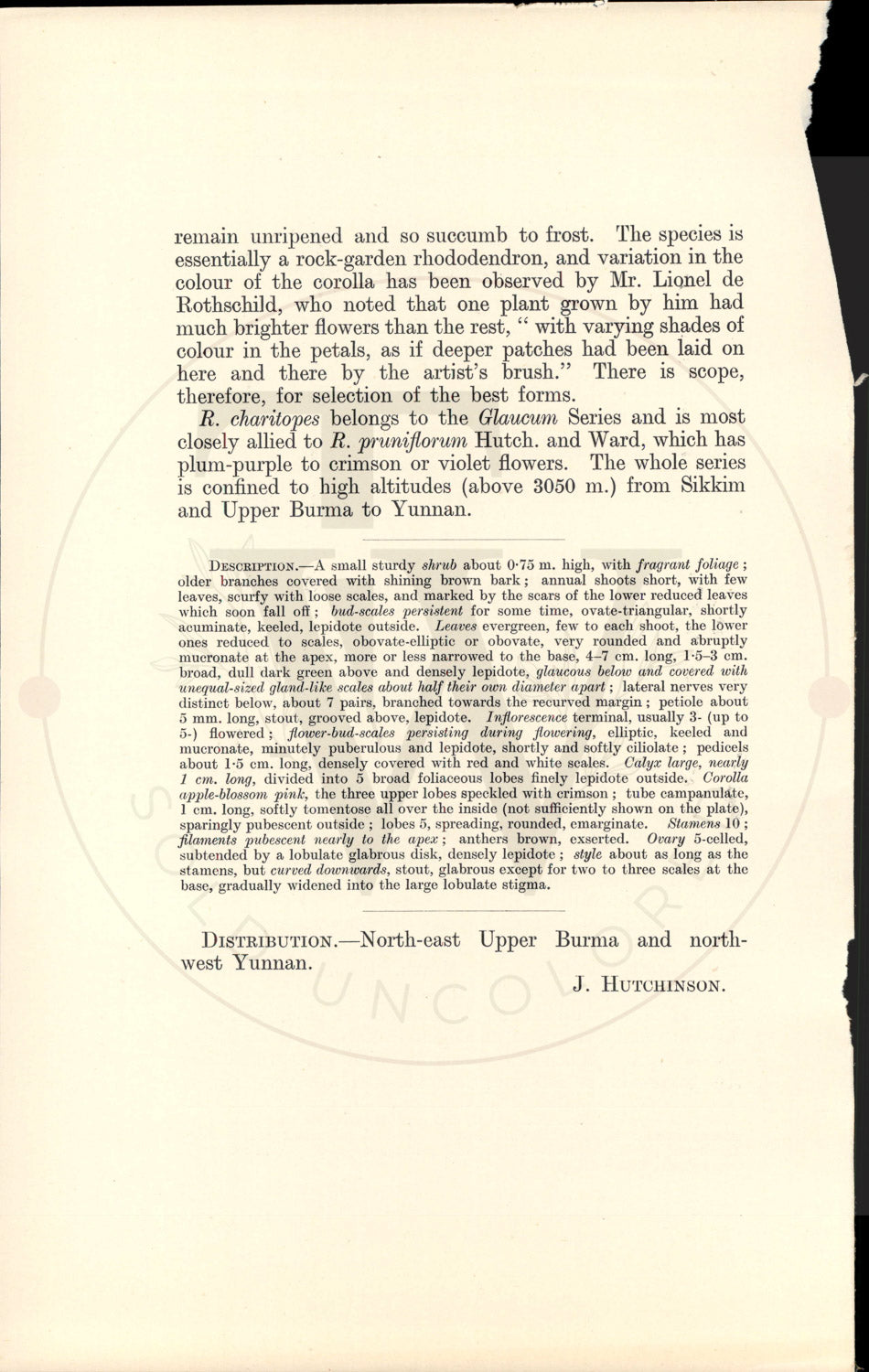Curtis Botanical Magazine
Plate 9358 - Rhododendron charitopes
Plate 9358 - Rhododendron charitopes
Couldn't load pickup availability
Curtis's Botanical Magazine - Plate 9358
Rhododendron charitopes
Family: ERICACEAE • Tribe: RHODODENDREAE • Native Region: Upper Burma and Yunnan • Publication Date: April 3rd, 1934
Distribution: Central Himalaya; Nepal, Sikkim, Tibet. • Tab Author: A. D. COTTON.
Botanical Description
The charm of Rhododendron charitopes lies not so much perhaps in its graceful aspect, as indicated by the specific name, but more in its beautiful flowers, which were aptly described by Farrer as Apple-blossom pink speckled with crimson." He discovered the species in June, 1920, in the Shing Hong Pass in north-east Upper Burma, at an altitude of 3200-3660 m. In the Chawchi Pass he noted the occur- rence of two specimens with pure white flowers, and of a natural hybrid with R. charopoeum Balf. f. and Farrer. R. charitopes was introduced into cultivation by G. Forrest, who collected it on two occasions in July, 1924, on cliffs and rocky slopes on the Salwin-Kiu Chiang divide (lat. 27 degrees 5?-15? N., long. 98 degrees 35'-40' E.), from 3350 to 4270 m. altitude. Plants grown from his seed, no. 25581, were flowered in 1929 at Caerhays, Cornwall, by Mr. J. C. Williams. The specimen from which the drawing was made was grown, from Forrest's seed, no. 25570, by the Marquess of Headfort, at Kells, Co. Meath, Ireland. According to him it has flowered for several years as late as the end of September. Its normal period of flowering, in the south and south-west of England, however, is about the end of April. When late flowering takes place the young vegetative shoots following the blossom are very apt to.
About This Print
Original black and white uncolored botanical print from Curtis's Botanical Magazine (established 1787). This 9000s series print is from unissued publisher stock, never hand-colored, representing the authentic plate as it appeared in the magazine. Edited by Sir Arthur William Hill for The Royal Horticultural Society, London.
Share







